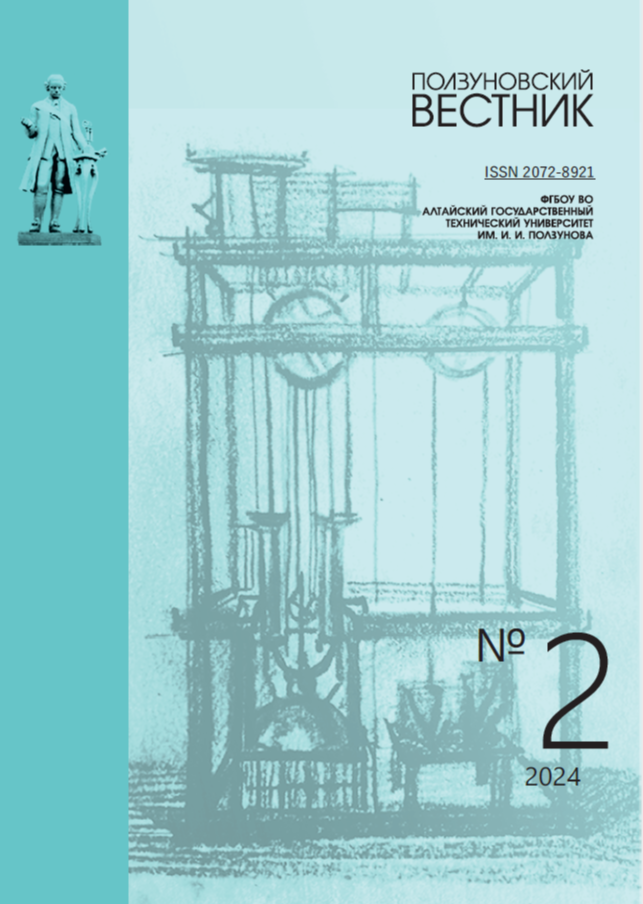COMPARATIVE ASSESSMENT OF THE CONTRIBUTION OF ELASTOMER TO FORMATION OF THERMOPHYSICAL CHARACTERISTICS OF RESISTIVE COMPOSITE MATERIALS BASED ON MICROGRAPHS OF THE STRUCTURE
JZXFOB
DOI:
https://doi.org/10.25712/ASTU.2072-8921.2024.02.034Abstract
It is shown that when designing resistive composite materials, it is important to provide a set of electrophysical and thermophysical parameters. Elastomers filled with technical carbon are considered, which are designed for a wide range of performance characteristics. A comprehensive study of the thermophysical properties of elastomers filled with technical carbon has been performed. The influence of the type of elastomer on the thermophysical characteristics is shown: thermal conductivity coefficient, thermal conductivity coefficient, specific heat capacity. It has been experimentally established that they decrease when replacing crystalline rubber as a binding base with an amorphous one. The relationship between the entropy of a textural feature and thermophysical characteristics with the type of elastomer is experimentally substantiated. A correlation has been established between the entropy of a textural feature determined from micrographs of the structure, the value of the volumetric electrical resistance of the material, and its thermophysical characteristics. The range of changes in the thermophysical characteristics and entropy of a textural feature depending on the type of elastomer is compared. It is concluded that the textural parameter is suitable for evaluating the contribution of elastomer to the formation of volumetric electrical resistance and its thermophysical characteristics, which expands the possibility of solving problems of designing materials with specified properties.
References
Дисперсно-наполненные полимерные композиты технического и медицинского назначе-ния/ Б.А. Люкшин (и др.); отв. ред. А.В. Герасимов Новосибирск: Изд-во СО РАН, 2017 г., 311 с.
Гуль В.Е., Шенфиль Л.З. Электропроводя-щие полимерные композиции. М.: Химия, 1984. 240 с.
Крикоров, B.C. Электропроводящие поли-мерные материалы /B.C. Крикоров, Л.А. Колмакова М.: Энергоатомиздат, 1984. 176с.
Минакова Н.Н. Моделирование процессов эксплуатационных воздействий для дисперсно – наполненных полимеров // Известия высших учеб-ных заведений физика .2000 Т. 43.№ 1.С. 42 -45.
Дульнев Г.Н., Заричняк Ю.П. Теплопроводность смесей и композиционных материалов Ленинград: Энергия, 1974. 264 с.
Тагер А.А. Физико-химия полимеров. М. : Научный мир, 2007.576 с.
ЛипатовЮ.С. Физико-химические основы наполнения полимеров. М.: Химия, 1991. 260 с.
Алоев В.З., Козлов Г.В. Физика ориентаци-онных явлений в полимерных материалах. Нальчик: Полиграфсервис.Т. 2002. 288 с.
Третьяков И.Н., Минакова Н.Н. Алгоритм разграничения доступа по радужной оболочке гла-за для решения задач контроля доступа к инфор-мационным ресурсам // Доклады Томского госу-дарственного университета систем управления и радиоэлектроники, 2010, № 1-1 (21). с. 100-102.
Минакова Н.Н., Карпов С.А., Ушаков В.Я. Текстурный анализ дисперсной структуры композитных эластомеров с модифицированным наполнителем//Известия высших учебных заведений. Физика. 2002, Т. 45, № 2, С. 80-83.
Прэтт У. Цифровая обработка изображе-ний: Пер. англ.М.: Мир, 1982.Кн.2. 480 с.
Фабуляк Ф. Молекулярное тепловое движение в поверхностныхслоях полимеров 1991 303 с
Волков Д.П., Егоров А.Г., Мироненко М.Э. Теплофизические свойства полимерных композиционных материалов // Научно-технический вестник информационных технологий, механики и оп-тики. 2017. Т. 17. № 2. С. 287–293.
Исаченко В. П., Осипова В. А., Сукомел А. С. Теплопередача. M.: Энергия, 1981. 416 с.
He X., Wang Y. Recent advances in the rational design of thermal conductive polymer composites //Industrial & Engineering Chemistry Research. 2021. Т. 60. №. 3. С. 1137-1154.
Cowan R.D., Pulse Method of Measuring Thermal Diffusivity at High Temperatures //J. of Appl. Phys., 34, 926, (1963).
Cape J.A. and G.W. Lehman, Temperature and Finite. Pulse-Time Effects in the Flash Method for Measuring Thermal Diffusivity// J. of Appl. Phys., 34, 1909, (1963).
Инструкция по работе с прибором DLF-1200 URL: https://www.directindustry.com.ru/prod/ta-instruments/product-38477-1796308.html. (Дата обращения 15.01.2024).
Downloads
Published
How to Cite
Issue
Section
License
Copyright (c) 2024 Natalia N. Minakova

This work is licensed under a Creative Commons Attribution 4.0 International License.















 .
. This work is licensed under a
This work is licensed under a 
